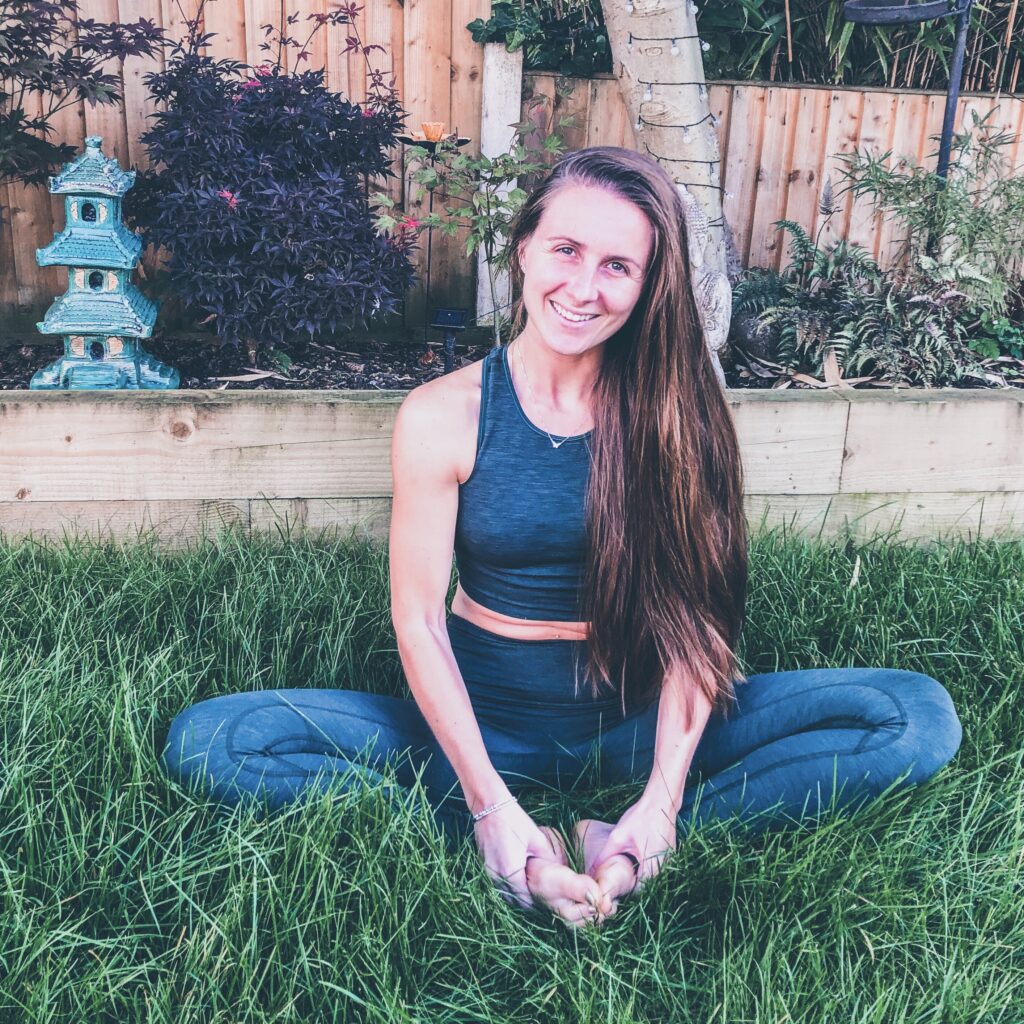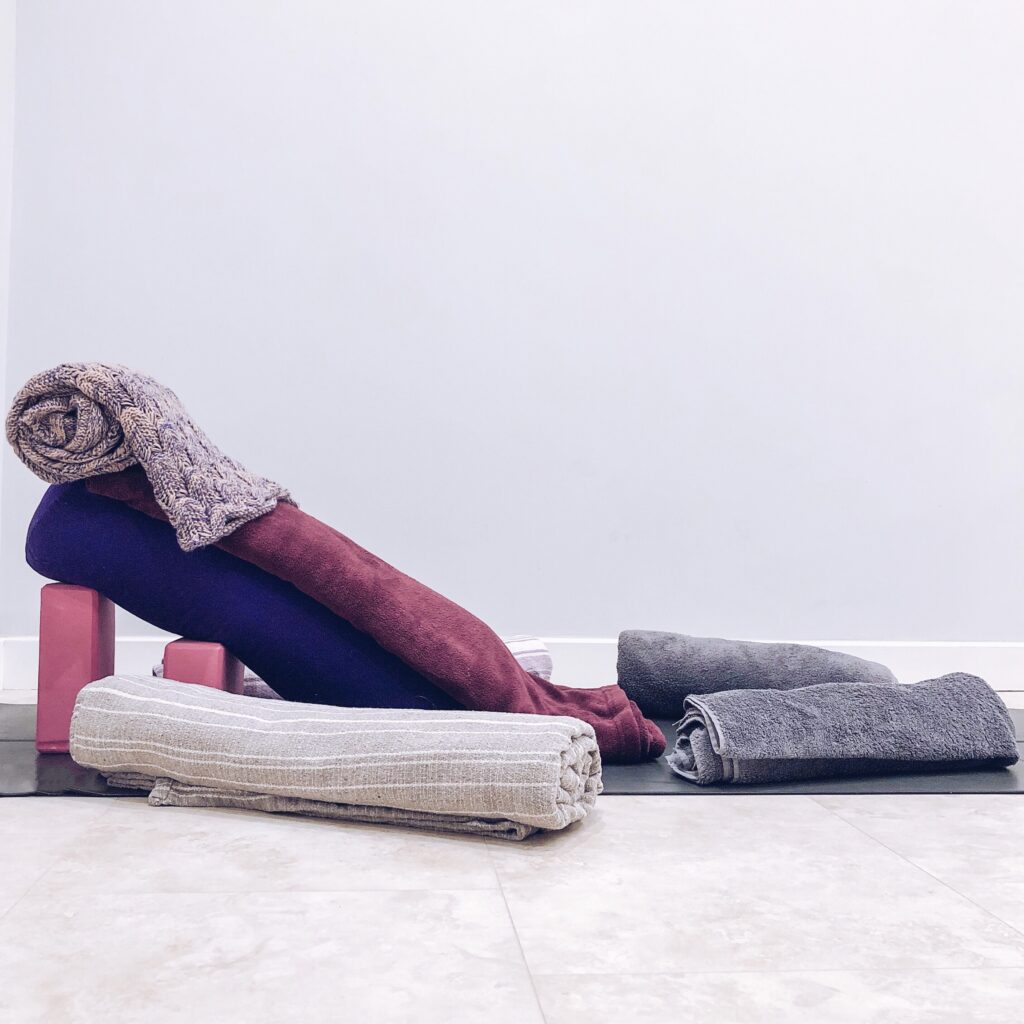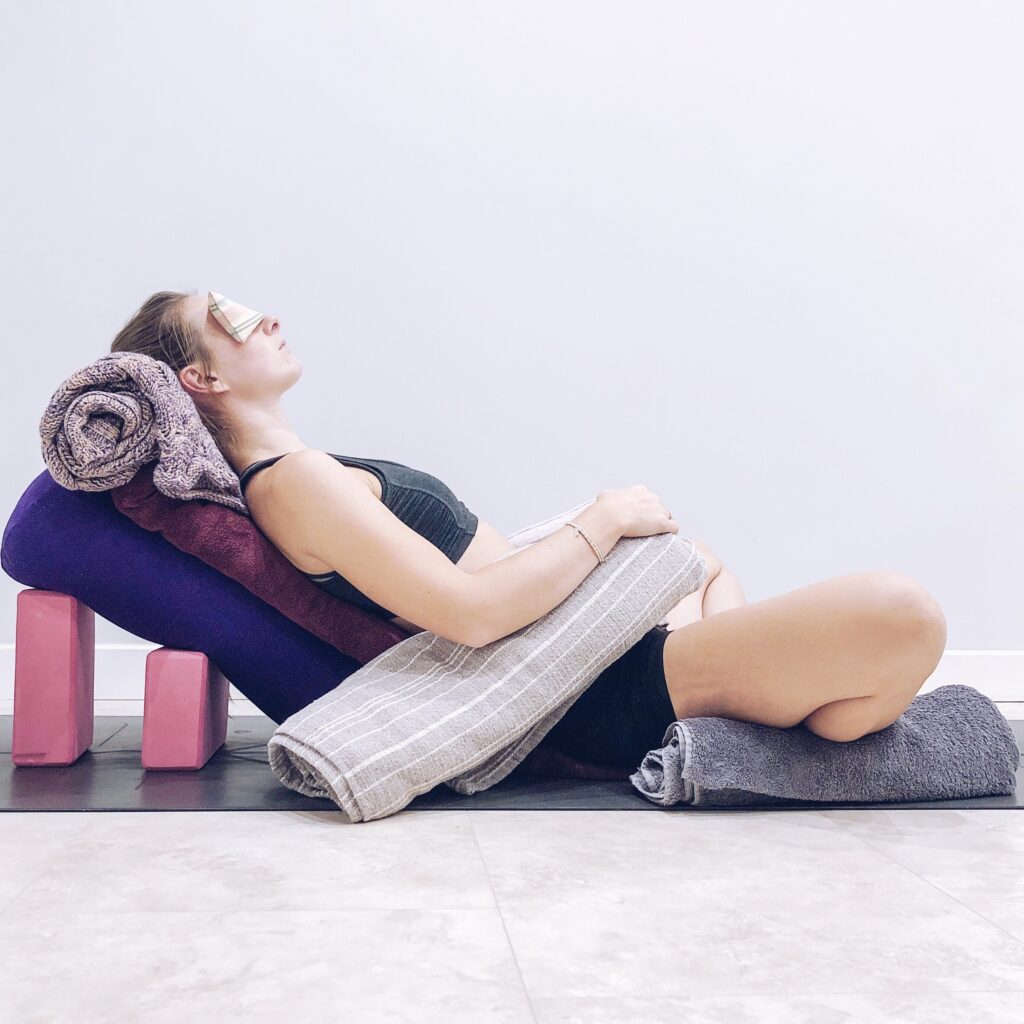
Etymology
Salamba meaning “supported”
Supta meaning “reclined”
Baddha meaning “bound”
Koṇa meaning “angle”
Āsana meaning “posture” or “seat”.
Also known as Cobbler’s pose, given the resemblance to Indian shoemakers, who sit in this position with the shoes held between their feet.
You may also hear it referred to as Poorna Titali Asana– Full Butterfly Pose. Whilst you may hear these names used interchangeably, there are subtle differences. For instance, Poorna Titali Asana is more of a dynamic movement that involves bouncing the knees like the wings of a butterfly (titali) and then using the palms to press the knees down.
Baddha Konasana versus Restorative (Salamba Supta) Baddha Konasana
You may well have practiced baddha konasana in regular yoga classes as part of a hip-opening sequence. It is well known for its ability to improve groin and hip flexibility, allowing a deep stretch, whilst also strengthening the back and core muscles. In restorative yoga, the aim in not to stretch or exert oneself, but to gently open and relax. Hence in restorative baddha konasana, it is essential to use the props effectively to prevent the hips from reaching their greatest range. In fact, prolonged stretching in an unsupported manner can overstretch the anterior sacral ligaments and cause injury. The back and abdominal muscles are also well supported so that they remain quiet and relaxed.
Benefits
- Can be beneficial for those that have a tendency to fall asleep whilst lying flat.
- Opens the chest.
- Quietens the abdomen.
- Is especially beneficial during menstruation, pregnancy and post-partum.
Contraindications
- Knee injury
- Sciatic and sacral conditions
How to practice
Props
- Mat
- Two blocks
- Firm bolster
- Up to 8 blankets
- Eye mask or hand towel
Entering the pose
1. Gather your props and set up your mat. You may prefer to practice on a carpeted area or rug to provide added comfort for the sacral area.
2. Set up your props as shown below:
- Set up two blocks, one with its long axis against the mat and one on its short axis.
- Arrange your bolster on top of these blocks so that it is at 45 degrees. If you are not using a firm bolster, you may require extra blocks to support the bolster in this position.
- Place at least one blanket, folded lengthways over the bolster extending down onto the mat to support your sacrum. A further blanket can be rolled up and placed at the head-end of the bolster to support the head and neck.
- Roll a further 4 blankets, one for each of your arms and legs and place them as shown.

3. Sit on your mat at the base of your bolster, with the sitting bones on the lip of the blanket and the buttocks firmly pressed against the bolster.
4. Bend the knees and bring the soles of the feet together, letting the heels rest a comfortable distance from the body. The knees should be allowed to drop to the side.
5. Arrange the rolled blankets so that they support the base of the thighs, and lower calves, not the knees directly. The goal of restorative yoga is not the stretch but to gently open, hence preventing the hips from reaching their fullest range of motion.
6. Lay back on the bolster ensuring the back, neck and head are well supported.
7. Place a rolled blanket under each forearm ensuring that they are well supported with the hands coming to rest higher than the elbows, palms face down.
8. Cover the eyes with an eye mask or hand towel. You may also choose to cover the body with a further blanket.
9. Enjoy for 20-30 minutes.

Coming out
- Feel your awareness returning to the room.
- When you are ready, take several deeper breaths.
- Place the hands on the outer edge of the thighs and use them to gently guide the knees back together.
- Stretch the legs out straight and roll to one side, remembering that you’re elevated from the mat.
- Take several breaths lay on your side and then find your way to a seated position using your arms and hand for assistance.
Duration
- 20-30 minutes
Awareness
- Feel the rounding of the body directing your energy towards your centre, rest in the stillness found here.
- The spiritual awareness should be on Svadhisthana (Sacral) Chakra
Key practice notes
- Ensure the entire length of the spine is well supported.
- The chest should feel spacious and open, not caving inwards.
- The abdomen should remain quiet.
- Ensure the legs are supported as described so that the hips are not opened to their fullest range of motion.